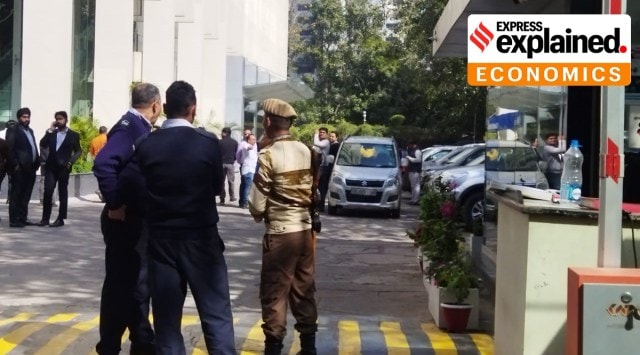BBC allegedly diverted profits by violating ‘transfer pricing’ rules. What are they?
According to the I-T Department, transfer pricing refers to prices of transactions between associated enterprises that may take place under conditions different from those under which independent enterprises transact. Transfer pricing ensures that the parent company — or a specific subsidiary — produces insufficient taxable income or excessive loss on a transaction.
 Income Tax Department conducts a survey at the BBC office in New Delhi (Express photo by Prem Nath Pandey)
Income Tax Department conducts a survey at the BBC office in New Delhi (Express photo by Prem Nath Pandey) The Income-Tax Department surveys at the premises of the British Broadcasting Corporation (BBC) in Delhi and Mumbai on Tuesday (February 14) were conducted in view of the BBC’s “deliberate non-compliance with the transfer pricing rules” and its “vast diversion of profits”, government sources said.
The surveys were looking into “manipulation of prices for unauthorized benefits, including tax advantages”, sources said.
The BBC has been “persistently and deliberately violative of transfer pricing rules, it has “deliberately diverted a significant amount of the profits”, and has not followed the “arm’s length arrangement” in the allocation of profit, the sources said.
The BBC said it was “fully cooperating” with the authorities, and “hope[d] to have this situation resolved as soon as possible”.
What is transfer pricing?
A party may transfer goods or services to another party for a price, which is known as a “transfer price”. However, commercial transactions between different parts of a multinational group may not be subject to the same market forces that shape the relations between two independent firms.
According to the I-T Department, “transfer pricing generally refers to prices of transactions between associated enterprises which may take place under conditions differing from those taking place between independent enterprises”.
Transfer pricing refers to the “value attached to transfers of goods, services, and technology between related entities, and between unrelated parties that are controlled by a common entity”.
How does transfer pricing work?
The I-T Department gives the following example: “Suppose a company A purchases goods for 100 rupees and sells it to its associated company B in another country for 200 rupees, who in turn sells in the open market for 400 rupees.
“Had A sold it (the good) direct, it would have made a profit of 300 rupees. But by routing it through B, it (A) restricted it (profit) to 100 rupees, permitting B to appropriate the balance.
“The transaction between A and B is arranged and not governed by market forces. The profit of 200 rupees is, thereby, shifted to the country of B. The goods is transferred on a price (transfer price) which is arbitrary or dictated (200 hundred rupees), but not on the market price (400 rupees).”
What effect does transfer pricing have?
According to the I-T Department, the effect of transfer pricing is that the parent company — or a specific subsidiary — tends to produce insufficient taxable income or excessive loss on a transaction.
“For instance”, the I-T website says, “profits accruing to the parent can be increased by setting high transfer prices to siphon profits from subsidiaries domiciled in high-tax countries, and low transfer prices to move profits to subsidiaries located in low-tax jurisdiction.
“As an example of this, a group which manufactures products in a high-tax country may decide to sell them at a low profit to its affiliate sales company based in a tax haven country. That company would in turn sell the product at an arm’s length price, and the resulting (inflated) profit would be subject to little or no tax in that country. The result is revenue loss and also a drain on foreign exchange reserves.”
And what is the “arm’s length arrangement” that the BBC has allegedly violated?
Section 92F(ii) of the Income Tax Act, 1961 defines arm’s length price as “a price which is applied or proposed to be applied in a transaction between persons other than associated enterprises, in uncontrolled conditions”.
Section 92C(1) says arm’s length shall be determined by the “most appropriate” among the following methods: “(a) comparable uncontrolled price method; (b) resale price method; (c) cost plus method; (d) profit split method; (e) transactional net margin method; (f) such other method as may be prescribed by the Board”.
- 01
- 02
- 03
- 04
- 05






































